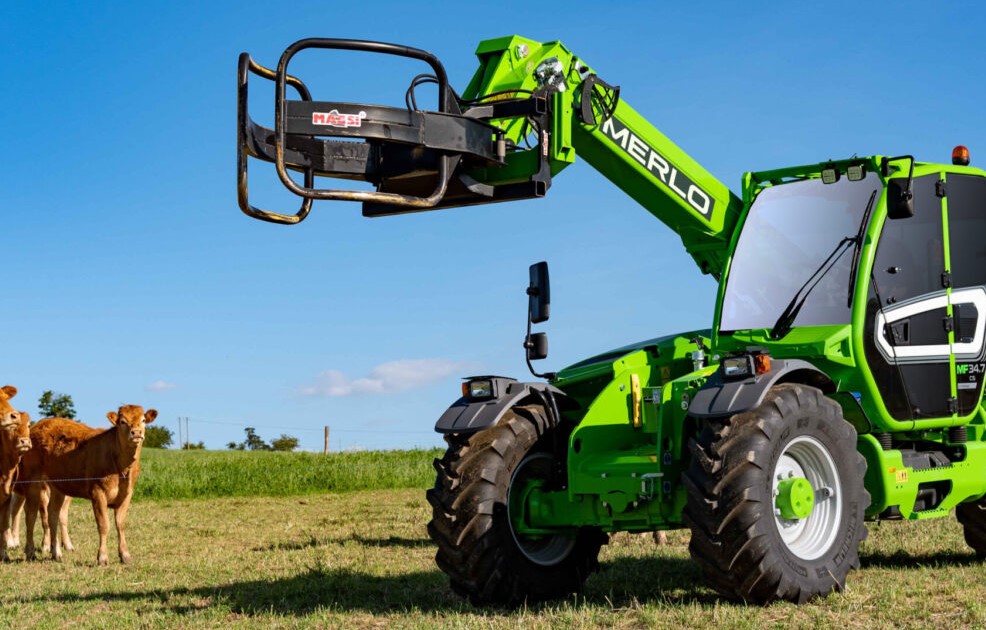How to Maintain Your Telehandler for Maximum Efficiency

With large-scale projects that demand speed and precision, any downtime due to equipment malfunction can result in significant losses. Telehandlers, also known as telescopic handlers, are crucial machines that provide versatility by lifting materials to various heights and distances. Like any piece of heavy machinery, telehandlers for sale in Australia need regular maintenance to operate efficiently and safely.
This article highlights how to maintain your telehandler to maximise its efficiency and lifespan, reduce downtime, and minimise repair costs. It also covers setting up a preventive maintenance plan and specific checks for different systems.
What Is a Telehandler?
Telehandlers are material lifting equipment designed to lift heavy loads to significant heights. Unlike traditional forklifts, telehandlers can extend their boom to reach further, providing versatility in tight or hard-to-reach spaces. These machines are indispensable in construction, agriculture, and even in some industrial settings, where lifting materials like bricks, pipes, or bales is common.
Their unique capability to adjust to different lifting needs makes them an invaluable asset. In essence, telehandlers are a hybrid between a forklift and a crane, offering a combination of stability and reach.
The Importance of Regular Maintenance
A telehandler requires consistent maintenance to ensure it performs optimally. Without it, you risk experiencing frequent breakdowns, reduced performance, and safety hazards. It’s tempting to focus on repairs when something goes wrong, preventive maintenance is always the better approach.
Regular maintenance doesn’t only keep things running smoothly; it ensures safety for operators and extends the life of the equipment. With proper upkeep, your telehandler can avoid costly repairs and unplanned downtime. It’s about protecting your investment and ensuring it continues to perform optimally.
Maintaining your telehandler ensures that it operates at peak performance. A well-maintained machine works faster, consumes less fuel, and requires fewer repairs, all of which lead to lower operating costs. Regular checks help identify small problems before they become larger, more expensive issues.
Setting Up a Preventive Maintenance Plan
It’s easy to ignore maintenance until something goes wrong, but setting up a preventive maintenance plan can save time, money, and frustration. This plan focuses on scheduled inspections and servicing to catch issues before they turn into major problems.
Scheduled maintenance ensures that your telehandler receives timely service and reduces the chances of major malfunctions. Reactive repairs occur only when something breaks down at the most inconvenient time. By adhering to a maintenance schedule, you avoid unnecessary downtime and expensive emergency repairs.
Creating a maintenance calendar helps ensure that you stay on top of tasks. Here’s a basic breakdown:
- Weekly: Perform daily inspections and check the tire pressure, fluid levels, and cleanliness of the machine.
- Monthly: Inspect the hydraulic system, test the lights and safety alarms, and check for wear on key parts like the tires and engine components.
- Annually: Conduct more in-depth checks like transmission fluid replacement, hydraulic filter replacement, and full system diagnostics.
Digital maintenance logs and checklists can make the job easier and more reliable. These logs help track when services were performed, the condition of various parts, and upcoming maintenance needs.
Daily Inspection Checklist
Even before starting a telehandler for the day, a quick visual inspection is a must. This takes only a few minutes but can help catch small problems before they develop into bigger ones.
A daily walkaround should include checking for visible damage to the body of the machine, like dents or cracks in the frame. Ensure that all doors and safety guards are secure.
Look for any signs of leaks around the engine, transmission, or hydraulic systems. Check bolts, nuts, and other fasteners are tight, as loose parts can cause serious issues.
Ensure that all lights, horns, and safety alarms are working. These systems are critical for the operator’s safety in high-traffic areas.
Engine and Transmission Maintenance
Regularly changing the engine oil and filters is crucial for maintaining engine performance. Dirty oil leads to excessive wear and can cause the engine to overheat. Follow the manufacturer’s guidelines for oil change intervals.
The transmission is another critical component of your telehandler. Check the transmission fluid to ensure it’s at the right level and free of debris.
The cooling system keeps your engine temperature in check. Ensure that the radiator is clean and free of debris to maintain optimal engine temperature and prevent overheating.
Tire and Wheel Maintenance
Selecting the right tires is essential for optimal telehandler performance. Ensure that the tires you use are suitable for the terrain and load requirements of your job site.
Tire pressure should be checked regularly to ensure they are not over or under-inflated. This affects handling and the overall safety of the telehandler.
Look for signs of damage on the rims, and always check that the lug nuts are tightened to prevent accidents during operation.
Conclusion
Maintaining a telehandler is essential for ensuring its efficiency, safety, and longevity. Regular maintenance checks, large and small, help avoid costly repairs and extend the life of the equipment. By investing in preventive maintenance and staying on top of your maintenance calendar, you can ensure your telehandler performs its best. Whether you are looking for a telehandler for sale or already owning one, keeping your telehandler in top condition is not only about protecting an investment; it’s about ensuring your projects run as smoothly as possible.




